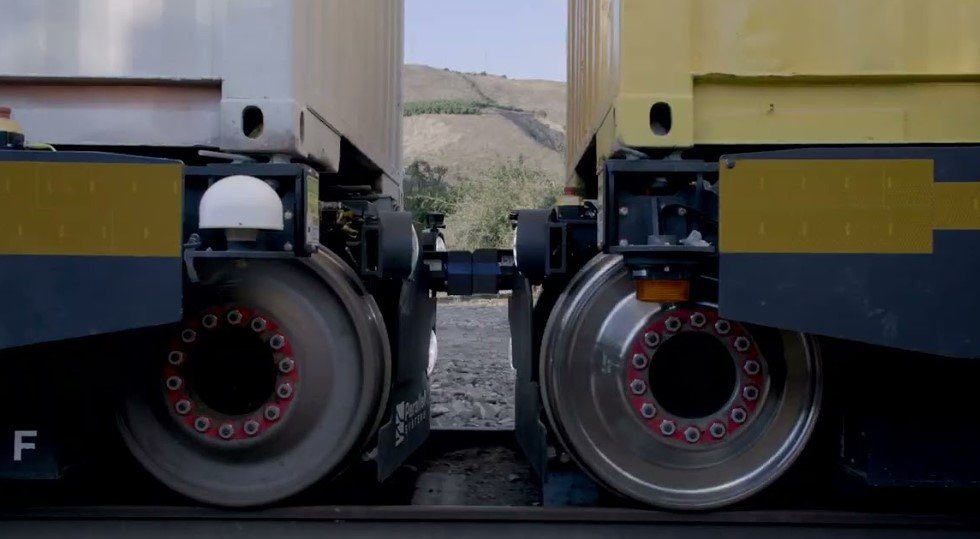A groundbreaking pilot program featuring self-propelling railcars from Parallel Systems has launched on the Heart of Georgia railroad, aiming to boost efficiency in short-haul deliveries. Backed by advanced optimization from the National Renewable Energy Laboratory, this initiative could help railroads challenge trucks in a market long dominated by road transport.
Pilot Kicks Off Amid High Expectations
Parallel Systems, a innovative rail tech company, started its commercial pilot in summer 2025 after gaining approval from the Federal Railroad Administration. The program runs on a 160-mile stretch of the Heart of Georgia railroad, operated by Genesee and Wyoming, focusing on autonomous battery-electric railcars that move containers without traditional locomotives.
This setup allows railcars to form small groups, or platoons, of 20 to 30 units. These groups travel efficiently, cutting down on drag and energy use. Early tests show promise for faster operations compared to standard freight trains.
Experts predict this could shift more cargo from roads to rails, easing highway congestion. In the United States, freight trains already handle about 1.5 billion tons of goods yearly, but they lag in short-haul trips under 500 miles.

The pilot includes seven phases, with the first phase wrapping up successfully in September 2025. During this stage, vehicles covered 90 miles and met all safety checks.
NREL’s Role in Optimizing Operations
Researchers at the National Renewable Energy Laboratory played a key part by using their ALTRIOS software to model and improve the system. This tool simulates train movements, terminal operations, and energy use at a detailed level.
In 2024, NREL teams visited test tracks in Colorado to gather data on how these railcars handle curves, braking, and speed. They fed this information into ALTRIOS, which helped identify ways to cut delivery times by up to 70%.
The software looks at everything from individual battery performance to full network traffic. This high-fidelity approach ensures railroads can plan better and reduce bottlenecks.
Parallel’s leaders say NREL’s input added solid data to back their vision. It shows how tech can make rail more competitive, especially for smaller lines.
One major finding: Optimized dispatching lets these railcars flow through facilities quicker than long trains, potentially lowering costs for shippers.
Benefits for Short-Haul Market Competition
Short-haul freight, trips under 500 miles, makes up a huge chunk of U.S. logistics. Trucks dominate with 75% of this market, while rails hold just 4%. Parallel’s self-propelling cars aim to change that by offering truck-like flexibility.
These battery-electric vehicles reduce emissions, aligning with 2025 federal goals for cleaner transport. They could cut carbon output from freight by shifting loads off diesel trucks.
Imagine fewer big rigs on highways, leading to safer roads and less traffic. Recent studies show over 40,000 truck-related crashes happen yearly in the U.S., many on short routes.
For businesses, this means cheaper, faster deliveries. Smaller railroads like Heart of Georgia could expand services, reaching more customers without massive investments.
Here are some key advantages:
- Faster turnaround: Platoons assemble and disband quickly, slashing wait times at terminals.
- Energy savings: Battery power and close formations reduce fuel needs by 20-30%.
- Scalability: Works on existing tracks, no need for new infrastructure.
Challenges and Future Outlook
No innovation comes without hurdles. Parallel must prove its system scales up safely across phases. Regulatory oversight remains tight, with ongoing safety reviews.
Manufacturing backlogs could slow rollout, as demand grows. The company raised $38 million in 2025 funding to boost production.
Competitors watch closely. Traditional rail giants might adopt similar tech, while trucking firms push back with their own electric advances.
Looking ahead, full deployment could happen by 2026 if pilots succeed. This ties into broader trends, like the 2025 infrastructure bill funding green rail projects.
| Aspect | Traditional Freight Trains | Parallel Self-Propelling Railcars |
|---|---|---|
| Power Source | Diesel locomotives | Battery-electric per car |
| Train Size | 100+ cars | 20-30 car platoons |
| Delivery Time for Short-Haul | Often days | Reduced by up to 70% |
| Market Share in Short-Haul | 4% | Potential to increase significantly |
| Emissions | High from diesel | Low, supports clean goals |
Broader Impact on U.S. Logistics
This Georgia pilot reflects a shift toward smarter, greener freight. With e-commerce booming, demand for quick deliveries surges. Rail’s revival could save billions in transport costs.
It also creates jobs in tech and manufacturing. Parallel plans expansions, drawing talent to innovate further.
As climate concerns rise, reducing truck emissions matters. Events like the 2025 global supply chain forum highlighted rail’s role in sustainability.
What do you think about this rail revolution? Share your thoughts in the comments and spread the word to fellow logistics fans.
